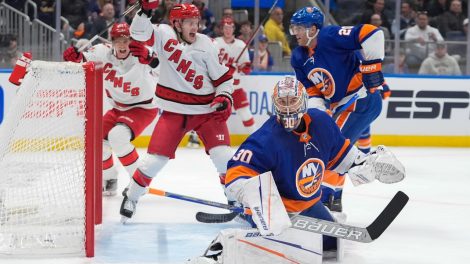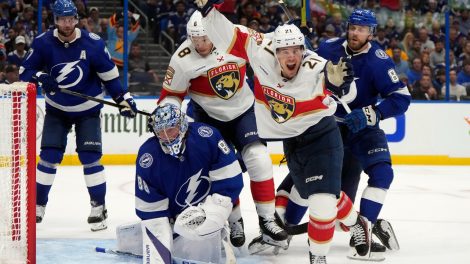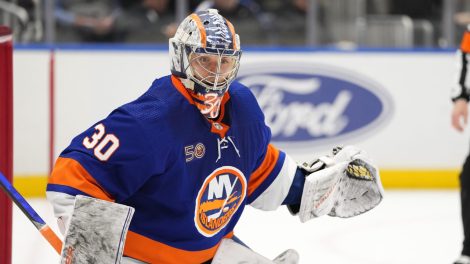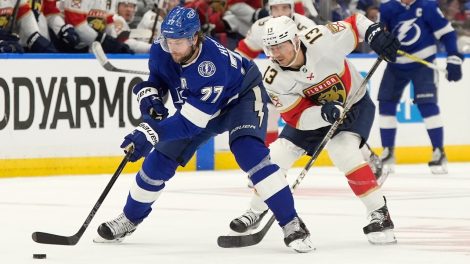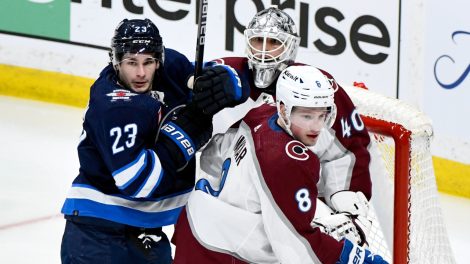Since we’re about one quarter of the way through the NHL’s schedule, we’re going to look at which groups of players are working the best so far and why. Starting out with forward lines (to be followed by defence pairs and goalies this week), we have to set some parameters because after just 20 or so games, there can be some wild results.
When you’re looking for the best lines, there has to be some level of sustainability, so you want good shot differentials and strong expected goals numbers, but we also want to capture lines that are red hot through the first quarter, so actual goal differential matters a lot, too.
One thing we have to keep in mind is we want to look at line combinations that play the tougher minutes and don’t just benefit from soft competition in a small sample. We’re looking at top lines that do it all.
Finally, we’ve got to take special teams out of it, because lines don’t always stick together there, so we’ll cut it down to 5-on-5 hockey, and the lines have to have played at least 100 minutes together in that situation to count. Luckily, Corsica.Hockey has all the tools necessary to get this information.
Here’s what I came up with as the top-five lines through the NHL’s first quarter:

Based on point production in the early season, many would assume Tampa Bay’s electric first line would easily be the best out there, but that isn’t the case at even strength. They’re still great, but they have been most potent on the power play, which isn’t factored in for our purposes.
Meanwhile, the surprising St. Louis Blues have built a line that’s strong by every measure, and trails only the Matthews line in Toronto in terms of goal control. [sidebar]
The JOFA line that powered the Predators’ offence last season remains strong this season, while the new experiment with Claude Giroux in Philadelphia has produced the most dynamic line the Flyers have seen in years.
What’s interesting isn’t simply the fact these lines have been incredible, though, it’s how they get it done. So let’s break down how each line creates offence, and how sustainable their success is long term.
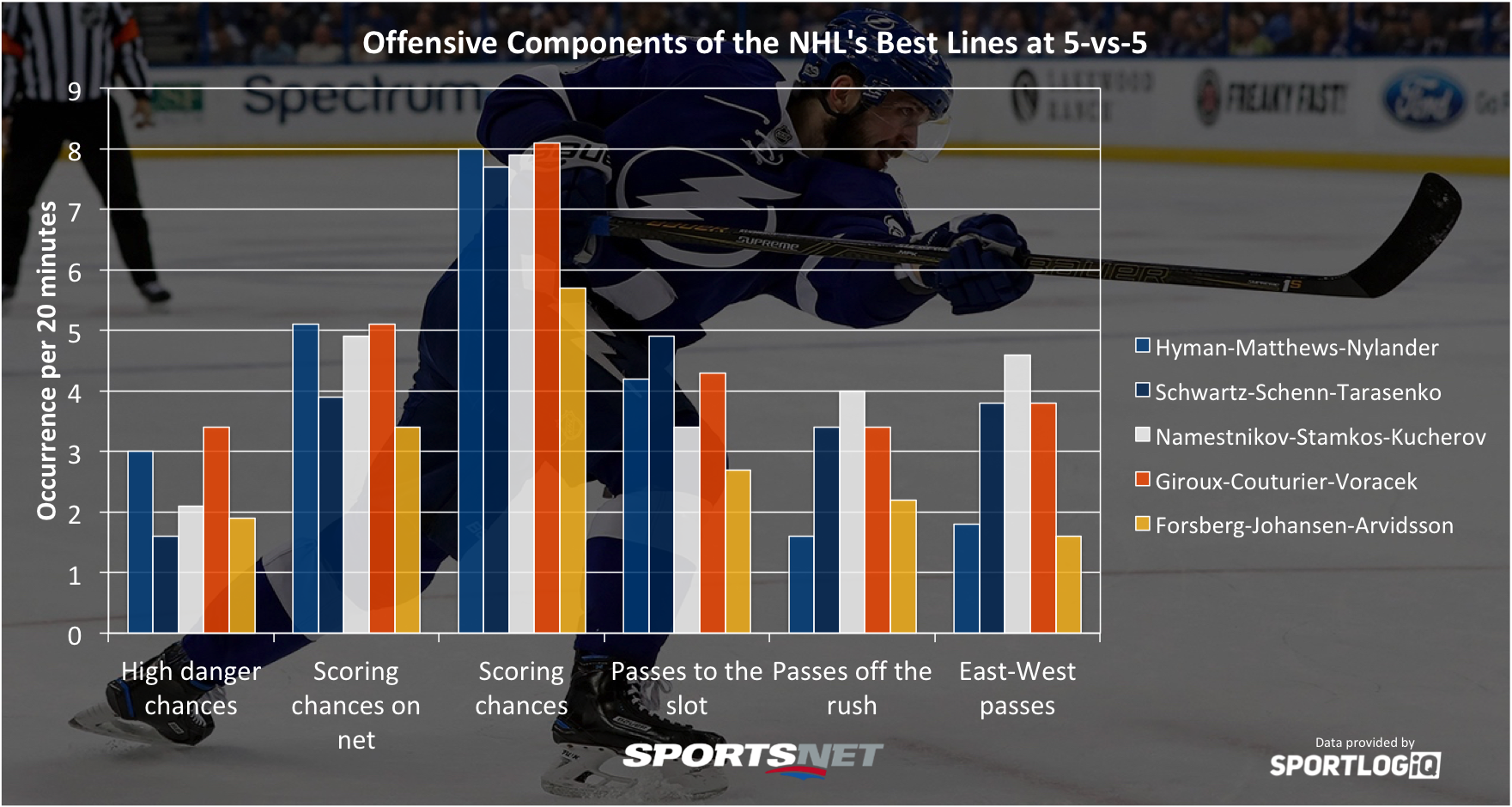
My assumption going in was that due to Auston Matthews, the Leafs’ top unit would be the leaders in high danger chances. But Sean Couturier actually leads the NHL in those this season and Jakub Voracek isn’t far behind, so the Flyers’ line ends up edging the Leafs’ in quality chances, and they also lead the pack in volume of scoring chances both on net and attempts.
Puck movement in the offensive zone adds another layer, and that’s where it becomes clear how the Blues’ line produces so much offence without getting to high quality locations as often, and missing lots of their shots. The Blues lead the pack in passes to the slot, and are tied for second in their ability to both attack off the rush and move the puck East-West.
The Lightning, meanwhile, don’t get the puck to the slot as often as you would think because they like to set up Kucherov and Stamkos on opposite sides and move the puck East-West to exploit teams and use two of the best one-timers in the NHL.
[snippet id=3638287]
The Flyers remain strong here with two elite playmakers in Voracek and Giroux on the same line consistently getting the puck to dangerous areas and making goalies move laterally. Based on shot locations and pre-shot movement, I think it’s fair to say the Flyers’ trio is the strongest pure offensive line.
The Predators trio, however, looks less special than the others offensively. Sespite strong differentials, they’re struggling to create quality chances. That was a problem for the Predators as a whole for the first quarter of the season and their hope is the added depth of having Kyle Turris down the middle should make it tougher for teams to focus entirely on the JOFA line and shut them down.
But even with the lack of quality chances, something has to be going right for the Preds’ top line, right? So let’s look at the defensive components of these lines.
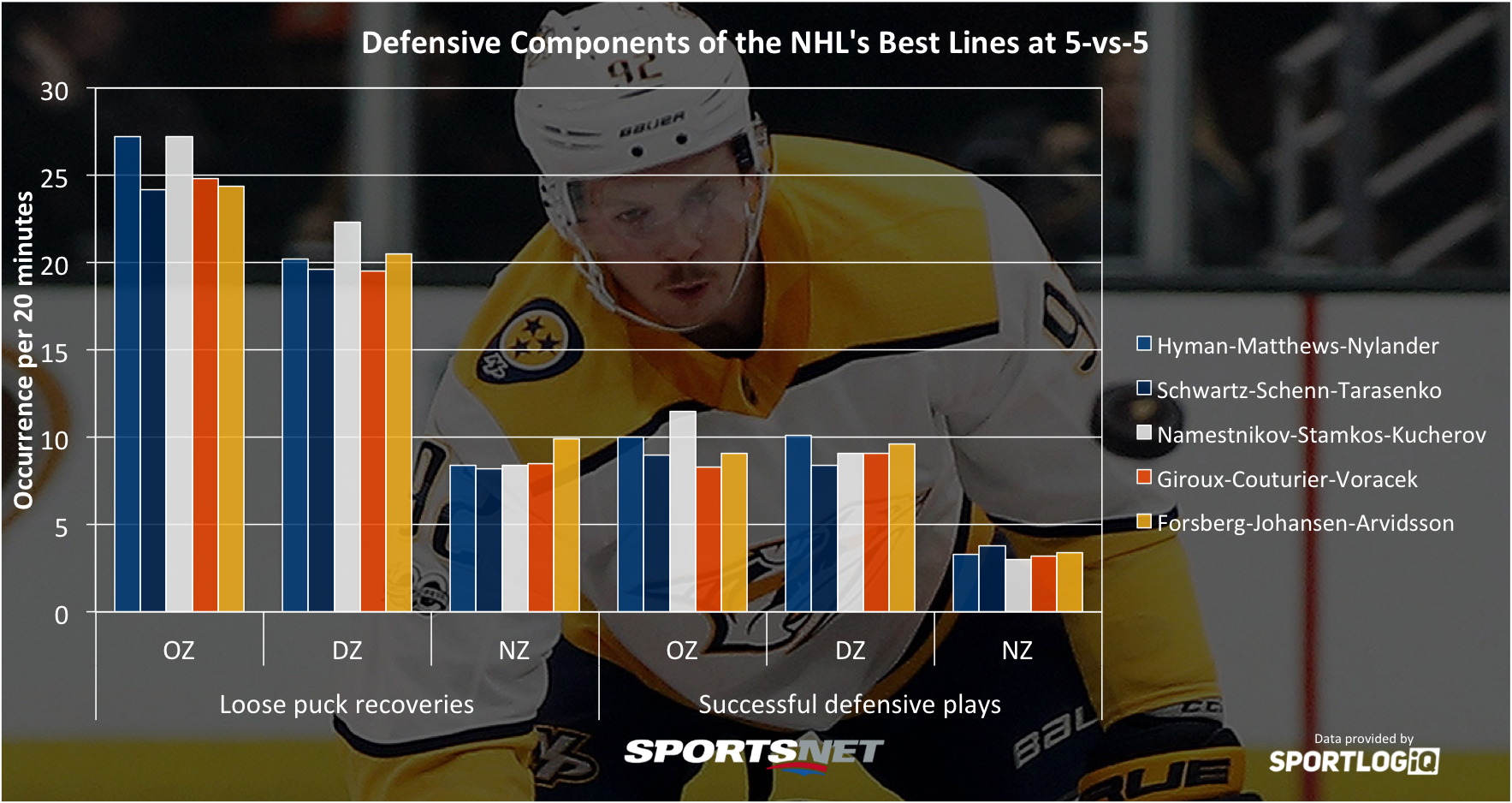
Positioning is pretty tough to measure effectively, but two things we can measure are how often players take the puck off an opponent’s stick, a successful defensive play, and how often they recover a loose puck. Those two actions that cause possession changes are the biggest factors in defensive play that we can accurately measure at the moment.
In the offensive zone, it’s actually the Lightning that provide the most intense forechecking presence, recovering the most loose pucks and stealing possession more than the rest of the group. This area is where Namestnikov truly shines, creating extra opportunities for his linemates instead of having to backcheck.
On the strength of Auston Matthews, the Leafs are right there with the Lightning, as he’s second in the NHL in loose puck recoveries among forwards, after finishing first last season. Matthews also gives the Leafs unit a strong presence in the defensive zone, where he has been stripping opponents of the puck at the same rate as Patrice Bergeron.
The Predators’ to line starts to shine in the defensive and neutral zones — they lead the pack in the neutral zone, causing changes in possession that result in odd-man rushes the other direction.
The Flyers and Blues lines are a bit behind the other teams in the offensive and defensive zones, making them a bit easier to exploit defensively, but the gap is pretty small there.
Ultimately, all these lines are punching slightly above their weight right now, but that’s what 20-game sample sizes in hockey are all about. The most interesting question I can see from this group of excellent lines is whether that Predators’ top line comes crashing down to earth, or if they start to produce better chances because of the team’s increased depth. It’s one to watch.
[relatedlinks]

